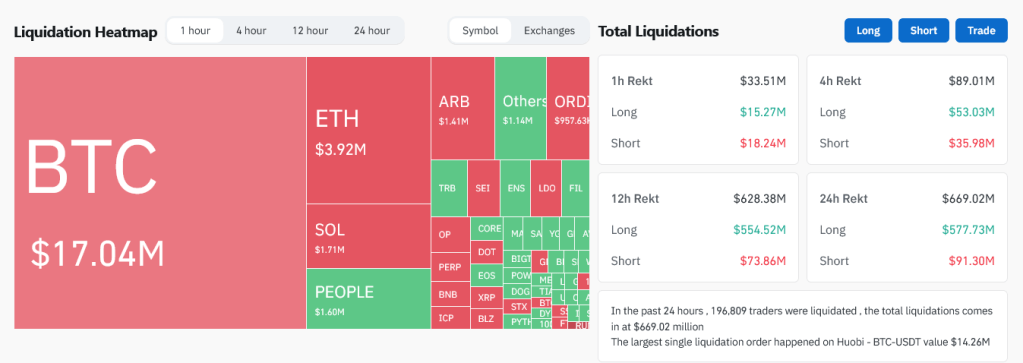The recent flash crash of Bitcoin from over $45,500 to as low as $41,100 has sent shockwaves throughout the crypto community, sparking debate over the underlying causes. While some have attributed the crash to unconfirmed rumors that the US Securities and Exchange Commission (SEC) might, after all, not approve Bitcoin ETFs in January, The Wolf Of All Streets on X suggests a different explanation.
Blame The High Funding Rate For The BTC Crash
The analyst points to the ultra-high positive funding rate on perpetual futures contracts as the primary culprit. In crypto perpetual trading, the funding rate is a mechanism that adjusts the price of futures contracts to reflect the difference in the spot price of the underlying asset, in this case, Bitcoin.
In recent months, the funding rate, according to Coinglass, had surged to multi-month highs, reaching an annualized rate of 66% on January 2, as The Wolf Of All Streets noted, before today’s crash.
With Bitcoin trending higher, a large influx of long positions on Bitcoin’s perpetual futures contracts drove the funding rate to monthly highs. Expanding Bitcoin prices created an imbalance in the market, with more people paying to be long than short. As a result, when the price of Bitcoin began to decline rapidly, exchanges had to unwind long positions, triggering a wave of liquidation.
As of January 3, records from Coinglass show that over $669 million were liquidated. Most of these positions were long, at around $577 million, with only approximately $91 million being shorts. Overall, OKX closed the most positions with $292 million longs closed. Binance, Huobi, and Bybit also closed many long positions.

Will Bitcoin Degens Arrest The Sell-Off?
According to The Wolf Of All Streets, the recent flash crash was not a natural market event but an intentional move orchestrated by “degens.” Based on the analyst, the unusually high funding rate as of early January 3 created a situation where long positions, amplified by leverage, had to be liquidated for equilibrium to be reinstated in the Bitcoin market.
The analyst’s comments echo those of other market observers who have warned of the potential for blow-ups in the perpetual futures market due to the high leverage and funding rates involved. These warnings have become more significant in light of the recent flash crash.
Click Here to Read the Full Original Article at NewsBTC…
























